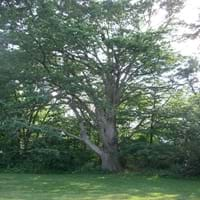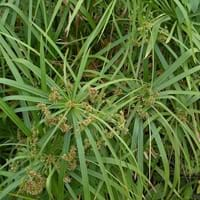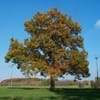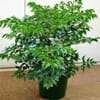Life Span
Perennial
Annual and Perennial
Origin
North America, United States, Northeastern United States, Mid-Atlantic United States, Central United States, South-Central United States, Texas, Mexico
Madagascar
Types
Not Available
Not Available
Habitat
Forests, Ridges, Rocky areas
Temperate Regions
USDA Hardiness Zone
4-8
8-11
Sunset Zone
2a, 2b, 3a, 3b, 4, 5, 6, 7, 8, 9, 10, 11, 12, 14, 15, 16, 17
H1, H2, 8, 9, 12, 13, 14, 15, 16, 17, 18, 19, 20, 21, 22, 23, 24
Habit
Oval or Rounded
Clump-Forming
Flower Color
Red, Light Green, Chartreuse
Yellow green, Brown
Flower Color Modifier
Bicolor
Bicolor
Fruit Color
Brown
Non Fruiting Plant
Leaf Color in Spring
Green, Yellow green
Green, Dark Green
Leaf Color in Summer
Dark Green
Dark Green
Leaf Color in Fall
Yellow, Orange
Dark Green
Leaf Color in Winter
Not Available
Dark Green
Leaf Shape
Lobed
Subulate
Plant Season
Spring, Summer, Fall
Spring, Summer, Fall, Winter
Sunlight
Full Sun
Full Sun, Partial Sun
Type of Soil
Clay, Loam
Clay, Loam, Sand
The pH of Soil
Neutral, Alkaline
Acidic, Neutral
Soil Drainage
Well drained
Poorly Drained
Bloom Time
Spring, Late Spring
Early Summer, Summer
Tolerances
Pollution, Salt
Drought
Where to Plant?
Ground
Container, Ground, Pot
How to Plant?
Seedlings, Stem Planting
Cuttings
Plant Maintenance
Low
Medium
Watering Requirements
Do Not over Water, Never Over-water, Requires regular watering
Average Water Needs
In Summer
Lots of watering
Lots of watering
In Spring
Moderate
Moderate
In Winter
Average Water
Average Water
Soil pH
Neutral, Alkaline
Acidic, Neutral
Soil Type
Clay, Loam
Clay, Loam, Sand
Soil Drainage Capacity
Well drained
Poorly Drained
Sun Exposure
Full Sun
Full Sun, Partial Sun
Pruning
Remove damaged leaves, Remove dead leaves, Remove dead or diseased plant parts, Remove hanging branches
Remove damaged leaves, Remove dead branches, Remove dead leaves
Fertilizers
Fertilize the first year, No need to fertilize every year
All-Purpose Liquid Fertilizer
Pests and Diseases
Insects, Red blotch
Red spider mite, Spider mites
Plant Tolerance
Salt
Drought
Flowers
Insignificant
Insignificant
Flower Petal Number
Not Available
Single
Foliage Texture
Coarse
Medium
Foliage Sheen
Glossy
Glossy
Attracts
Birds
Butterflies, Hummingbirds
Allergy
Asthma
Not Available
Aesthetic Uses
Landscape Designing
Showy Purposes
Beauty Benefits
No Beauty Benefits
Not Available
Environmental Uses
Air purification, Amazing growth rate, Food for insects, Nesting sites for birds, No fertilizer, pesticides, or herbicides needed, Prevent Soil Erosion
Air purification
Medicinal Uses
No Medicinal Use
Antibacterial, Antifungal
Part of Plant Used
Tree trunks
Root
Other Uses
Air freshner, Application in Furniture, Economic Purpose, Used as firewood, Used in construction, Used in pulpwood and lumber production, Wood is used for making furniture, Wood is used fore making tools, Wood is used in construction
Not Available
Used As Indoor Plant
No
Yes
Used As Outdoor Plant
Yes
Yes
Garden Design
Feature Plant, Shade Trees
Bog Garden, Container, Cutflower, Feature Plant, Houseplant, Tropical, Water Gardens
Botanical Name
QUERCUS muehlenbergii
Cyperus Alternifolius
Common Name
Chinkapin Oak, Yellow Chestnut Oak
Umbrella Papyrus, Umbrella Sedge, Umbrella Palm, Umbrella Plant
In Hindi
Chinkapin ओक
Umbrella Plant
In German
chinkapin Oak
Dach-Anlage
In French
chinkapin Oak
Parapluie Plante
In Spanish
chinkapin Roble
Umbrella Plant
In Greek
Chinkapin Oak
ομπρέλα φυτών
In Portuguese
carv Oak
Planta do guarda-chuva
In Polish
Chinkapin Oak
parasol roślin
In Latin
Oak Chinkapin
O Planta
Phylum
Tracheophyta
Magnoliophyta
Class
Magnoliopsida
Liliopsida
Family
Fagaceae
Cyperaceae
Clade
Angiosperms, Eudicots, Rosids
Angiosperms, Commelinids, Monocots
Tribe
Not Available
Cypereae
Subfamily
Quercoideae
Cyperoideae
Number of Species
Not Available
Season and Care of Chinkapin Oak and Umbrella Sedge
Season and care of Chinkapin Oak and Umbrella Sedge is important to know. While considering everything about Chinkapin Oak and Umbrella Sedge Care, growing season is an essential factor. Chinkapin Oak season is Spring, Summer and Fall and Umbrella Sedge season is Spring, Summer and Fall. The type of soil for Chinkapin Oak is Clay, Loam and for Umbrella Sedge is Clay, Loam, Sand while the PH of soil for Chinkapin Oak is Neutral, Alkaline and for Umbrella Sedge is Acidic, Neutral.
Chinkapin Oak and Umbrella Sedge Physical Information
Chinkapin Oak and Umbrella Sedge physical information is very important for comparison. Chinkapin Oak height is 1,220.00 cm and width 1,520.00 cm whereas Umbrella Sedge height is 45.70 cm and width 45.70 cm. The color specification of Chinkapin Oak and Umbrella Sedge are as follows:
Chinkapin Oak flower color: Red, Light Green and Chartreuse
Chinkapin Oak leaf color: Green and Yellow green
Umbrella Sedge flower color: Yellow green and Brown
- Umbrella Sedge leaf color: Green and Dark Green
Care of Chinkapin Oak and Umbrella Sedge
Care of Chinkapin Oak and Umbrella Sedge include pruning, fertilizers, watering etc. Chinkapin Oak pruning is done Remove damaged leaves, Remove dead leaves, Remove dead or diseased plant parts and Remove hanging branches and Umbrella Sedge pruning is done Remove damaged leaves, Remove dead branches and Remove dead leaves. In summer Chinkapin Oak needs Lots of watering and in winter, it needs Average Water. Whereas, in summer Umbrella Sedge needs Lots of watering and in winter, it needs Average Water.





